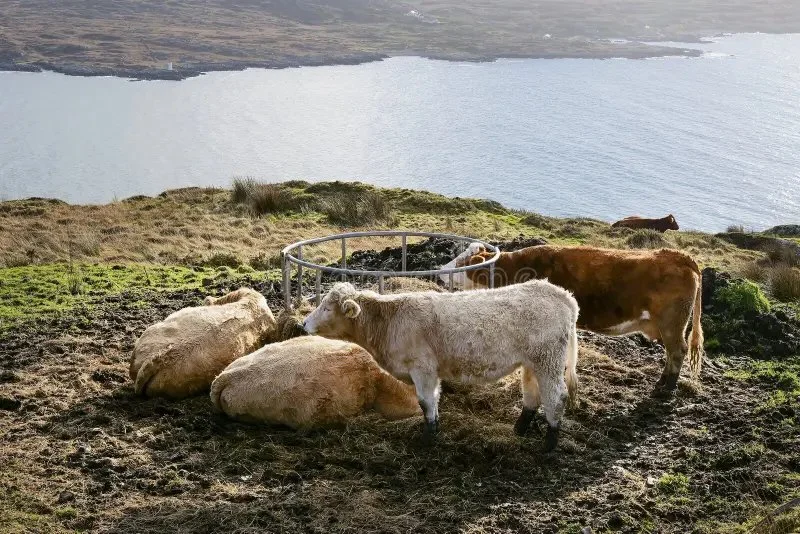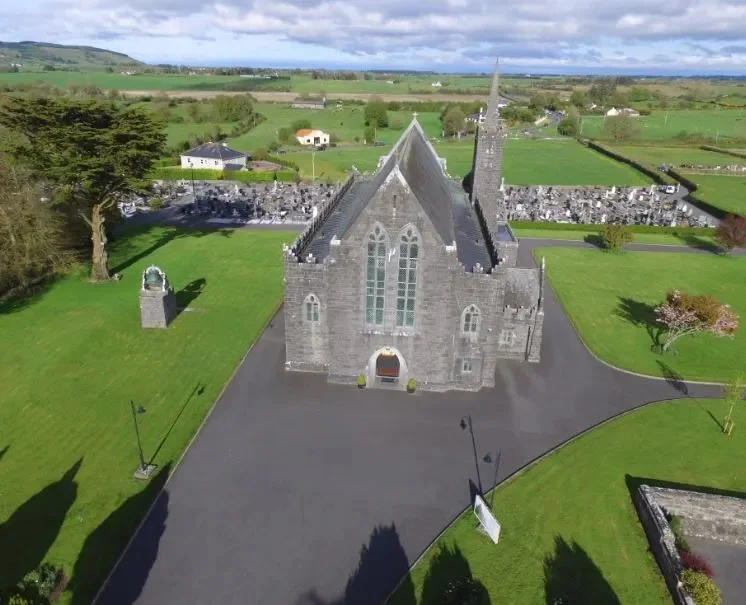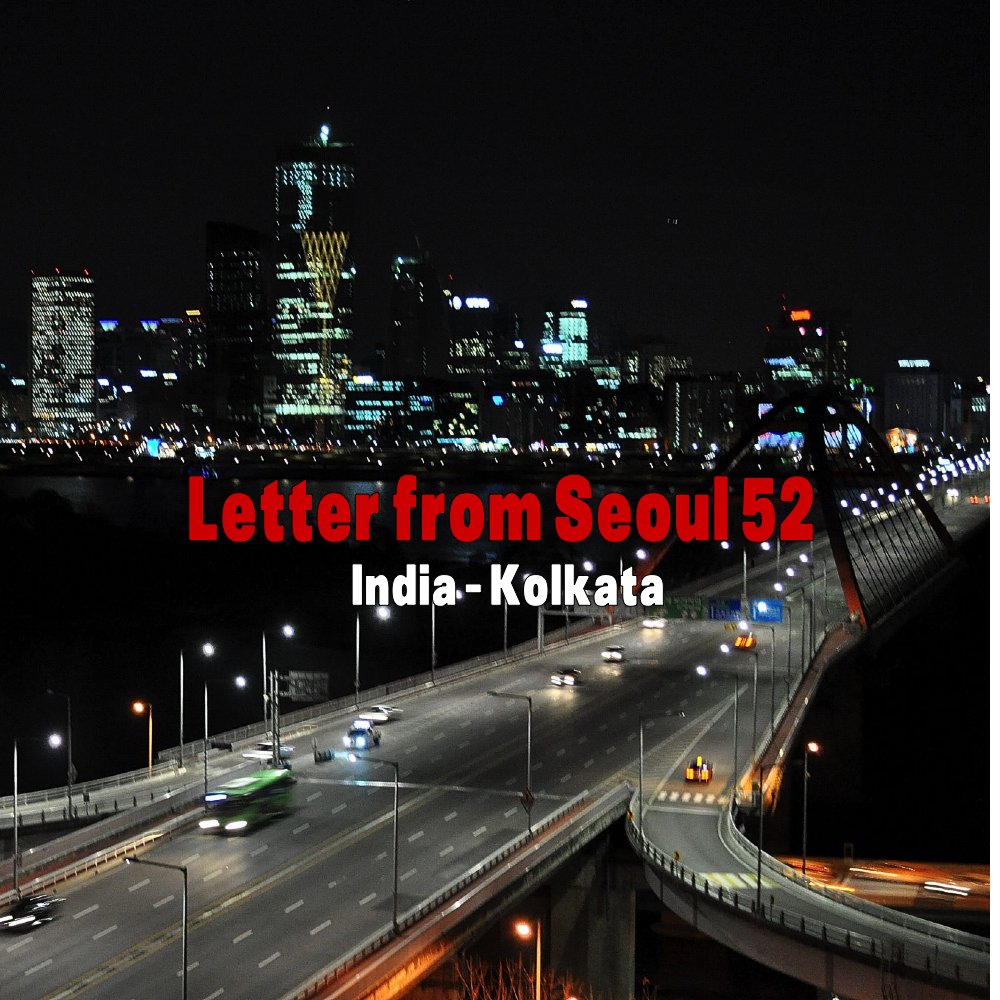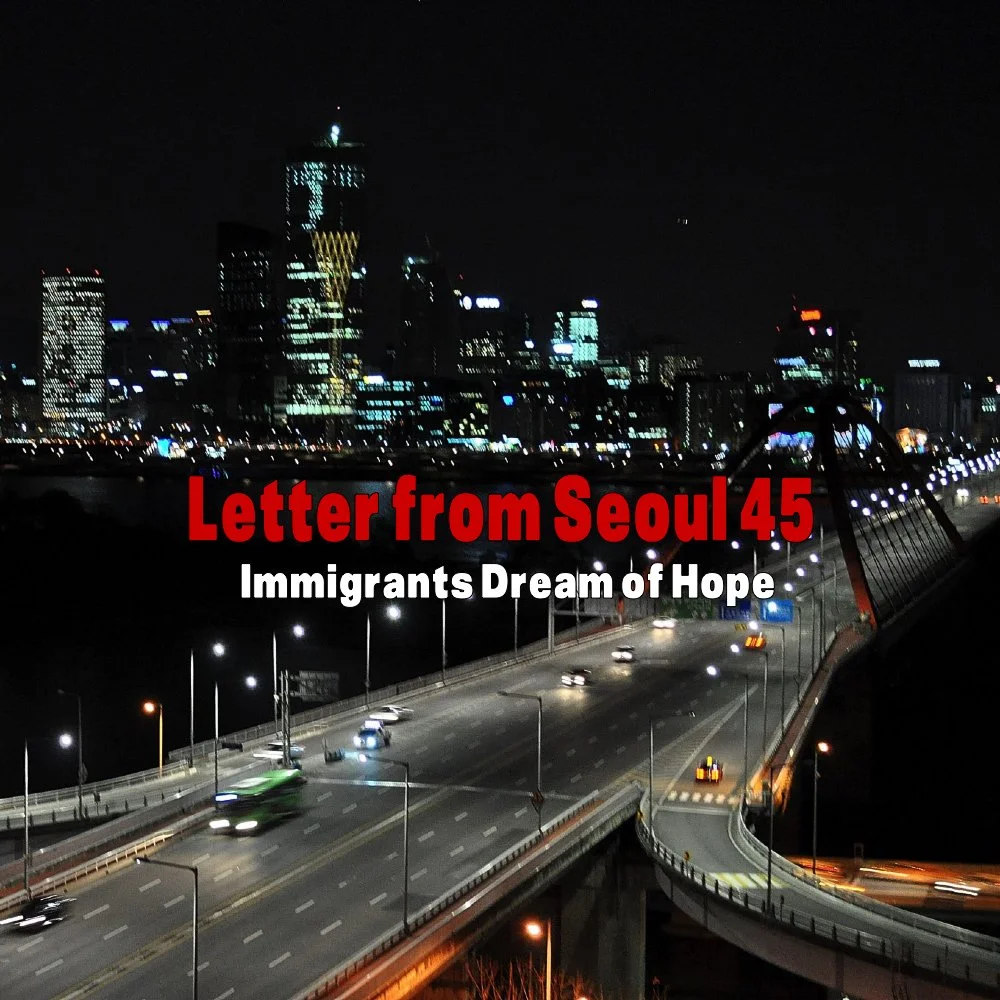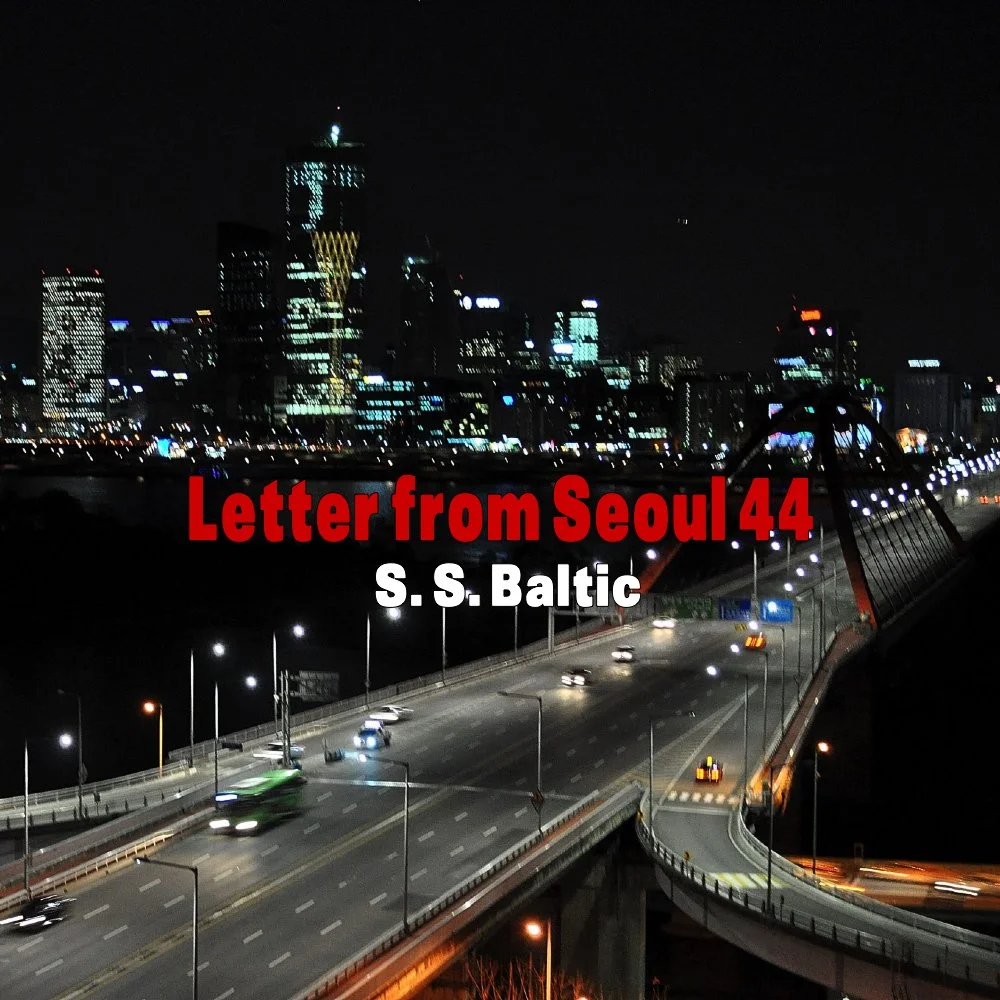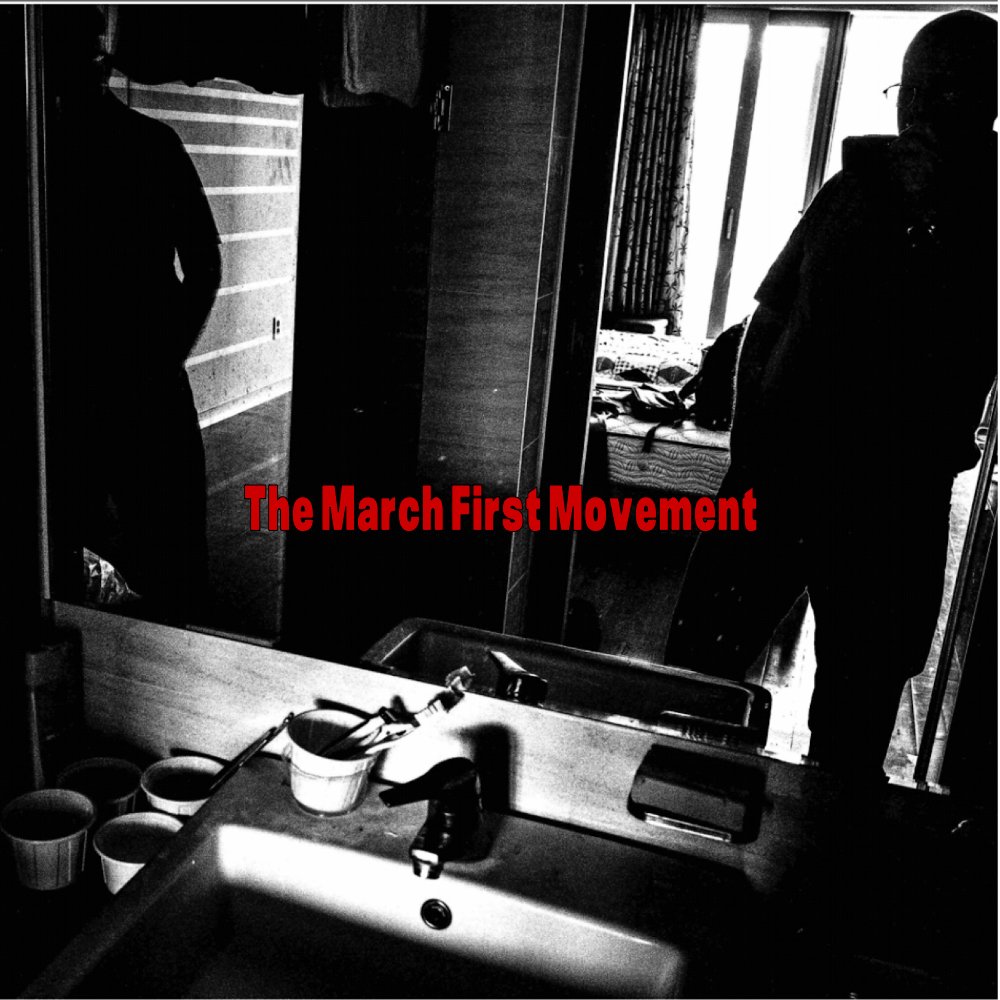Letter from Seoul 43
Main Street, Balla, in bygone days.
Part II
When Delia Higgins returned to Balla from America later in 1905, she announced that she would accompany the young Kennedys to St. Louis the next year.
The rest of the months were a jumble in Martin's recollections of daily life; of the waning summer and the changing season; of the frosty fall mornings when he was rung out of bed, and the cold, cold smell of the dark nights when he was rung into bed again, of the morning schoolroom in Balla, of the alternation of boiled beef with potatoes, and boiled mutton with potatoes, of clods of bread-and-butter, dog's-eared lesson books, and rainy Sundays.
The people populating Martin's dreams were now American, though the country of sleep was always the Ireland within the Mayo Abbey Parish. There were plenty of ghost stories told - banshees, horseless carriages, headless riders, men carrying coffins who disappeared over cliffs or into thin air, hearses and funeral processions appearing from nowhere, specters rising from the sea and out of the air - enough to keep any young boy with his head under the blankets at night.
Martin began his first year as a student at the Manulla School in September, 1901. On his first day of school, he was given a framed slate and three-inch pencil. The slate was lined on one side for writing, plain on the other for sums. By the fall of 1905, Martin was a fifth-year student at the Facefield National School. At the time, the length of the school year was 228 days. He walked to school most each of those days.
Six blows on each hand from the teacher's stick was the usual punishment for a wrong answer in class. Yet on Mondays, Father John McDermott would visit the school and ask questions from the Catechism. He would also ask questions about his sermon at Mass the day before to check if students were paying attention. Anyone who gave a wrong answer to the priest received a sore ear.
The change in schools occurred when both Martin and Ellen left the household of Thomas and Margaret Higgins to stay with Patrick and Mary Roche in the Carrownahan townland.
Patrick Roche was the brother of their deceased mother, Margaret (nee Roche) Kennedy. In all, there were seven Roche cousins, with Michael virtually the same age as Martin, and Ellen - known as “Lena” - just three years younger than Ellen Kennedy. Later, Patrick and Mary Roche had two more children, James Martin and Agnes.
The road ran past Uncle Patrick's gate, barely forty yards from the front door. To the south it climbed over the knock where lay the bogs from which their turf came, to Balla and the railway station.
In winter the road was deep in mud, and school children wore heavy boots with rows of studs on them, which saved the leather from getting worn. In summer months, children were allowed to leave the boots at home and go to school barefoot, when the dust was kind to little bare feet.
Summer and winter both Martin and Ellen, along with the Roche cousins, travelled the road on foot or on bicycles to school and to Mass. Many warm summer days they helped herd a cow grazing the “long meadow” - the grassy margin of the road - and felt the slow steady pulse of the countryside as it passed by.
There was the cow in the long meadow, slouching by on padded hoofs, and who whisked its tail on the clotted bony croups (see James Joyce’s Ulysses for the traditional Irish context).
Older people walked along the road, younger ones sailed past on bicycles carrying rails piled high with turf, there were carts full of clanking milk tankards, ad small herds of cattle on the way to a fair. Children were sent to Balla for “messages,” and occasionally a horseman or a tinker's spring cart, or the odd motor-car raised clouds of dust.
Martin had what every boy wanted, a road, a mile of kingdom, where he was king of banks and stones and everything. The road to Balla was Martin's link with the outside world.
Many of his people had traveled far on it, some never to return from the scattered kingdom of the newest lost tribe: his father, the three Kennedy sisters, John Staed, and others. Men like his grandfather Kennedy, who were glad to find work at four pence a day, built the road in 1840. The road carried the wedding parties and funerals of many from clann Cinneide. It bore the whole stream of a community's life.
Martin's occupation in his last solitary pilgrimage was to recall every yard of the road as he went along it, and to haunt the old spots, of which he never tired. He haunted them, as his memory had often done. The grave in the old cemetery, where his mother lay in a quiet corner, he walked near, startled by the sound of the church-bell when it struck, for it was like a departed voice to him.
Martin scarcely remembered his mother. Most all thoughts of her were based on stories the Roche family told him about Margaret Kennedy.
- How long ago was it? Year mother died. Eight years ago this month: ninetyeight she died, yes that's right. Too young to remember that day. Home always breaks up when the mother goes. Amor matris: Margaret Kennedy had loved me, borne me in her arms and in her heart. Was that real? The only true thing in life? She is no more. A poor soul gone to heaven.
All those years, Martin had gone on loving his father, more than ever. His idea was Martin's refuge in disappointment and distress, and made some amends to him, even for the constant change of households between the Higgins' and the Roches'. The more low-spirited Martin felt about his circumstances, the more he sought consolation in the image of John Kennedy in America.
When Martin thought about his father, he could conjure up a vivid picture of his whole appearance and especially the charm of his smile, which never failed to transport him into another world, where his heart softened and he felt full of peace, as he remembered feeling on rare occasions in his early childhood.
- I well remember though, how the distant idea of moving to St. Louis to live with my father, after being for an immense time to be a stationary speck, began to come towards me, and to grow and grow. How from counting years, I came to months, and then to weeks; and how I began to be afraid that I should not be sent for and when I learned from Delia Higgins that me and Ellen had been sent for by our father, and were certainly to go to St. Louis, and a new mother: Kate, had dim forebodings of the trip across the North Atlantic Ocean. What a strange feeling it is to be going home when it is not home, and to find that every object I study around Balla reminds me of the old happy home, like a dream I can never dream again.
The well-remembered ground was soon traversed, and Martin came into the quiet street of Balla, where every stone was a boy's book to him. He stood in the doorway of a shop, and looked across the ancient street at the opposite buildings, recalling how women in shawls went clicking along the paths together, and the dull rain fell in slanting lines, and poured out of make-shift water-spouts, and flowed into the road.
Perhaps the last image of Balla was reserved for St. Jarlath's Day, when troops of people passed through the village. They were on a variety of vehicles, from the humble donkey cart to every kind of bicycle imaginable. Many people tramped the roads in the summer dust; others walked across the fields and soft rolling hills.
Whether the people came from Skiddernagh or Carrownahan, they all converged in a common destination; they were on their way to St. Cronan's Church. June 6, the day of Ellen Kennedy's birthday, was also the feast day of St. Jarlath, the patron saint of County Mayo. Known as a “pattern” or patron day - this was a day of prayer, or penance, and cheery festivity, too, and courtship and laughter and dancing - a day made up of Irish faith and Irish history, revealed in the softer lights of Irish character.
The parish church had seen stormy times and was very old. It was old when the Danes raided the original building. It was old before the Saracens were smashed at Tours, before William the Conqueror landed at Hastings, before the Crusades. It was old before the great Cathedrals of Europe were built.
All images are stock photos in the public domain.

